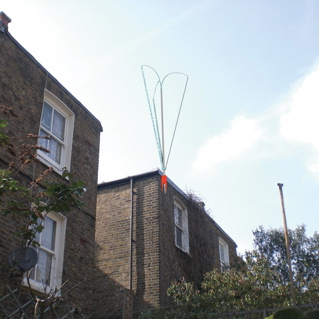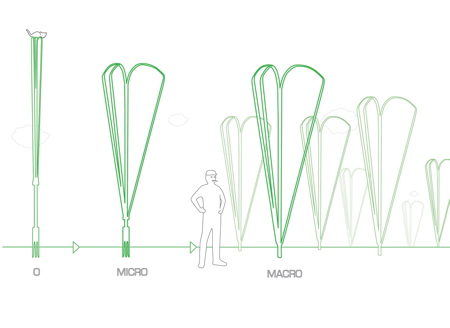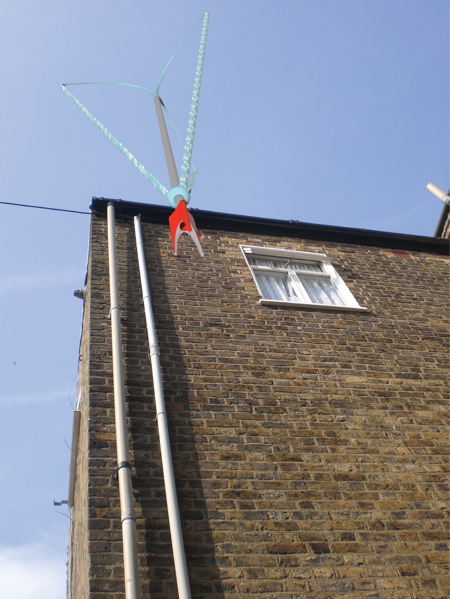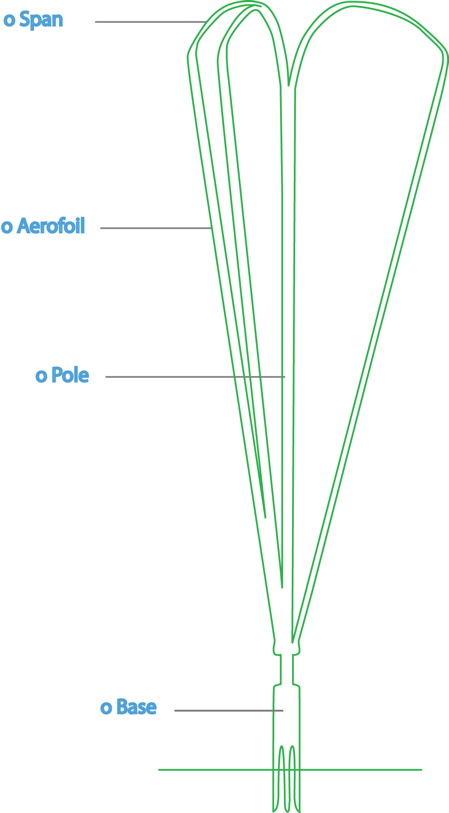
Domestic wind turbine by Ben Storan
RCA summer show: here is the first of our posts from The Great Exhibition 2007 - the Royal College of Art Summer Show, which is on at the RCA in London and a temporary venue in Kensington Gardens.

Brí is a domestic wind turbine designed by Industrial Design Engineering graduate Ben Storan. Storan claims the vertically rotating turbine can produce 1.2kW, three times the output of traditional windmill-type generators.

The design has won first prize in the BSI Sustainability Design Awards 2007.

The RCA summer show continues until 28 June.

Below is a product specification and a press release about the BSI award:
--
Product Specification:
Overall Height: 4 meters
Span Diameter: 2.5 meters
Weight: Cost: Approximately £999
Rated Power Generation: 1.2 kW @ 12m/s
PRESS RELEASE
14 June 2007
A revolutionary new design for personal wind turbines wins top prize at the BSI Sustainability Design Awards 2007.
Ben Storan, a student graduating with an MA in Industrial Design Engineering from the Royal College of Art (RCA), has been working for the past year in conjunction with Imperial College to design an affordable personal wind turbine suited to the urban environment.
The result is a unique design which uses vertical, rather than traditional horizontal, rotation. This feature gives a slower rotational speed, which allows the turbine to capture more energy from turbulent air flow, common to urban environments. It also means quieter operation.
As a result, it is able to generate more energy than domestic models currently on the market. Similarly sized existing personal wind turbines claim to generate 1kW at a wind speed of 12 m/s, but typically produce just 40% of what is claimed. Ben’s design should realistically produce 3 times that (1.2kW) of those currently on the market.
The clever vertical rotation design uses lightweight materials, which means Ben’s turbine is more stable than other personal turbines leading to better energy capture and making it is easier to install.
Speaking of winning the award and £3,000 first prize, Ben says “I’m delighted to win such a prestigious award. Growing up in the windy west of Ireland I’ve always been acutely aware of the huge potential in harnessing such a free, clean and renewable source of energy which, along with a spinning clothes line, gave me the idea in the first place."
Whilst still at the early stages of development, Ben hopes that his design will be in production in the not too distant future.
Runners-up in the BSI Sustainability Design Awards 2007 are Joe Wentworth for his retrofit folding handlebars which encourages cycling in urban environments where space for bike storage is at a premium, and Andreas Zachariah for his “Carbon Hero™" personal carbon calculator.
About the BSI Sustainability Design Awards
The BSI Sustainability Design Awards support design projects that promote awareness of sustainability issues or provide sustainable solutions. Now in their 13th year, the Awards are open to all students studying at the Royal College of Art. The Awards help students find out more about their chosen subjects while learning about the relevance of sustainability issues to design. Prize money is used to help research and realise projects.
Past winners include: Peter Brewin for his high performance water-saving shower – The El Nino – which uses 70 per cent less water and 40 per cent less energy than a conventional shower; and Will Crawford and Peter Brewin for “The Concrete Canvas" – a rapidly deployable hardened shelter for use by aid agencies in disaster regions. This ‘building in a bag’ won the $100,000 first prize in the Saatchi & Saatchi 2005 Award for World Changing Ideas.